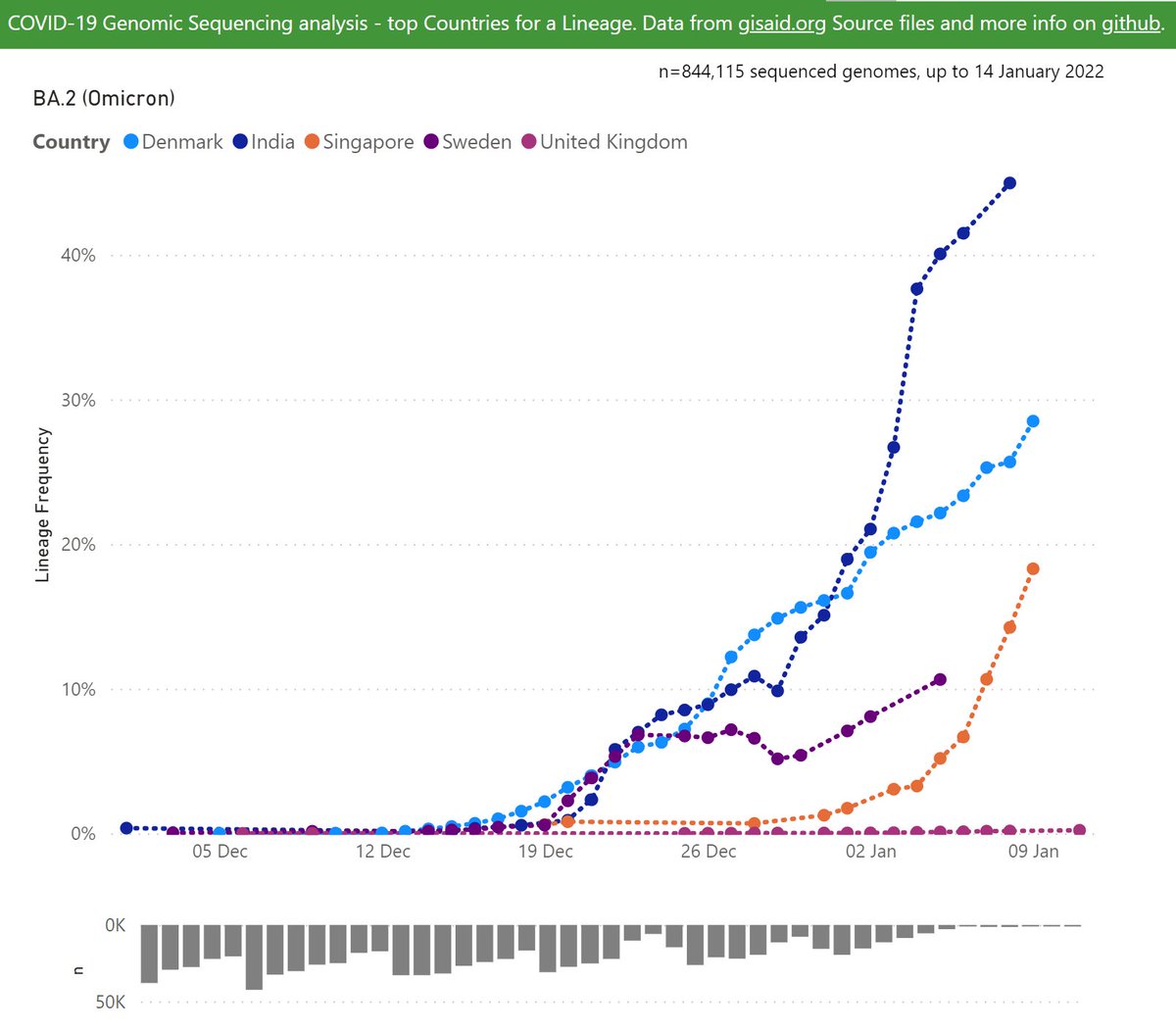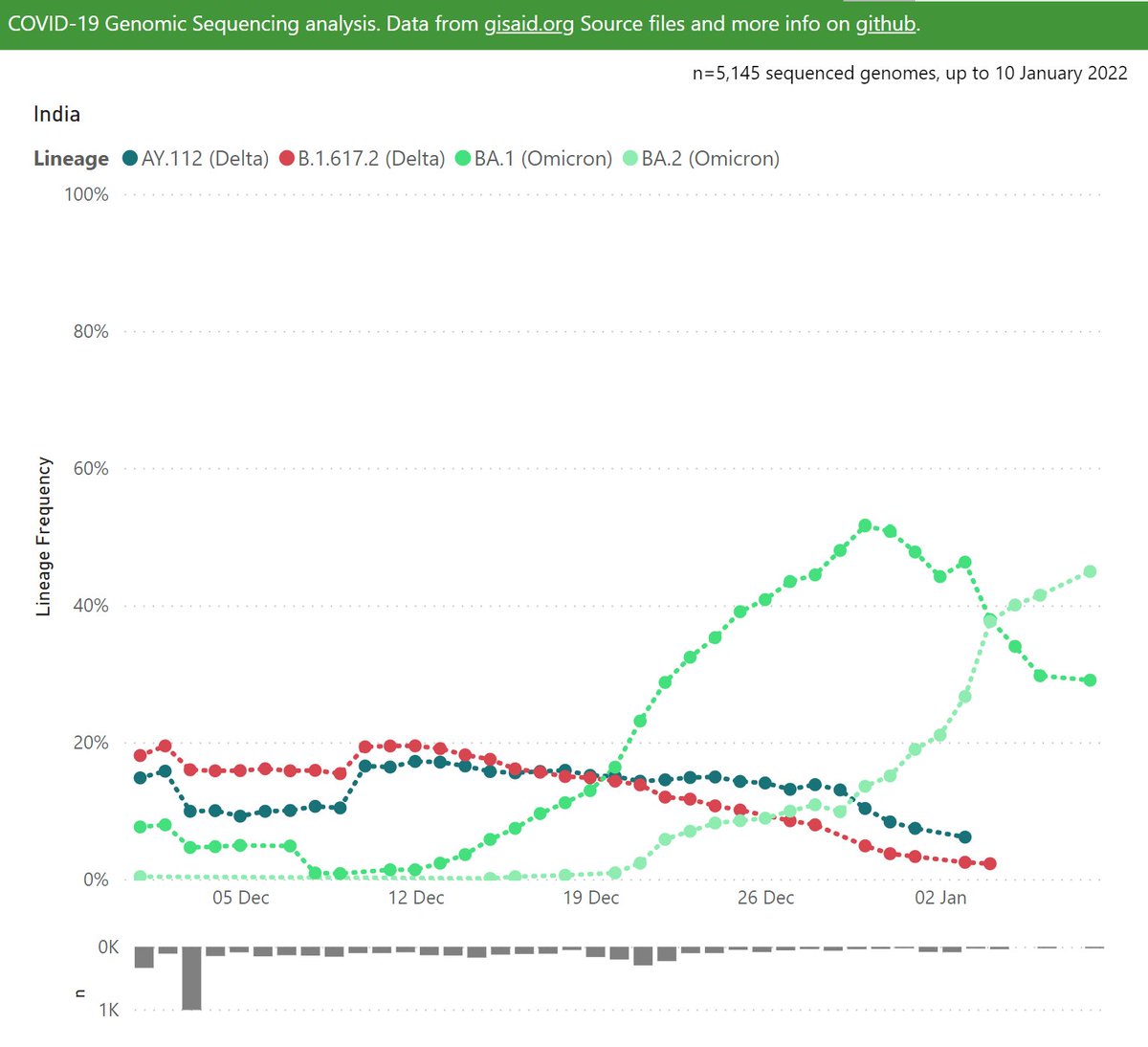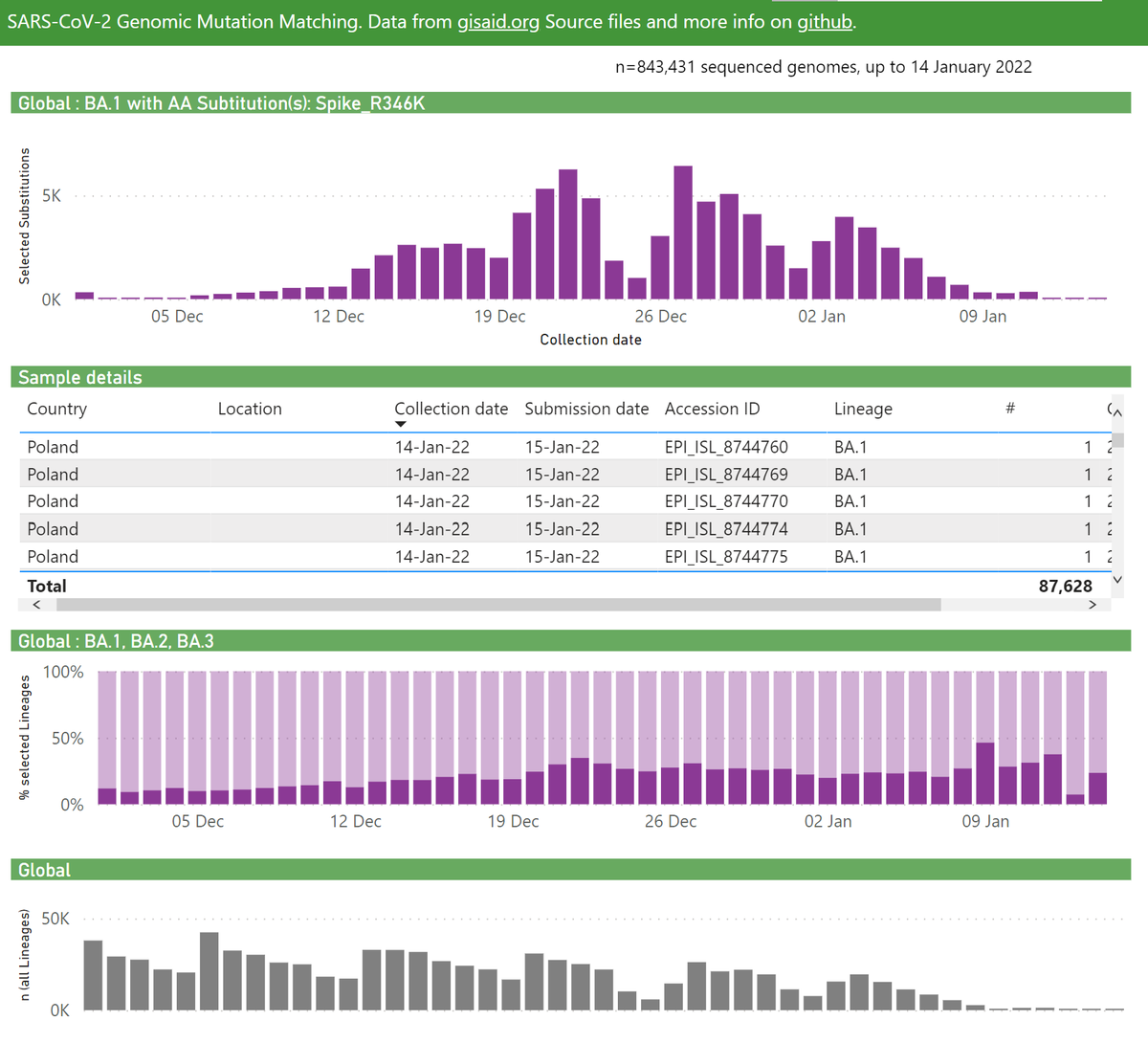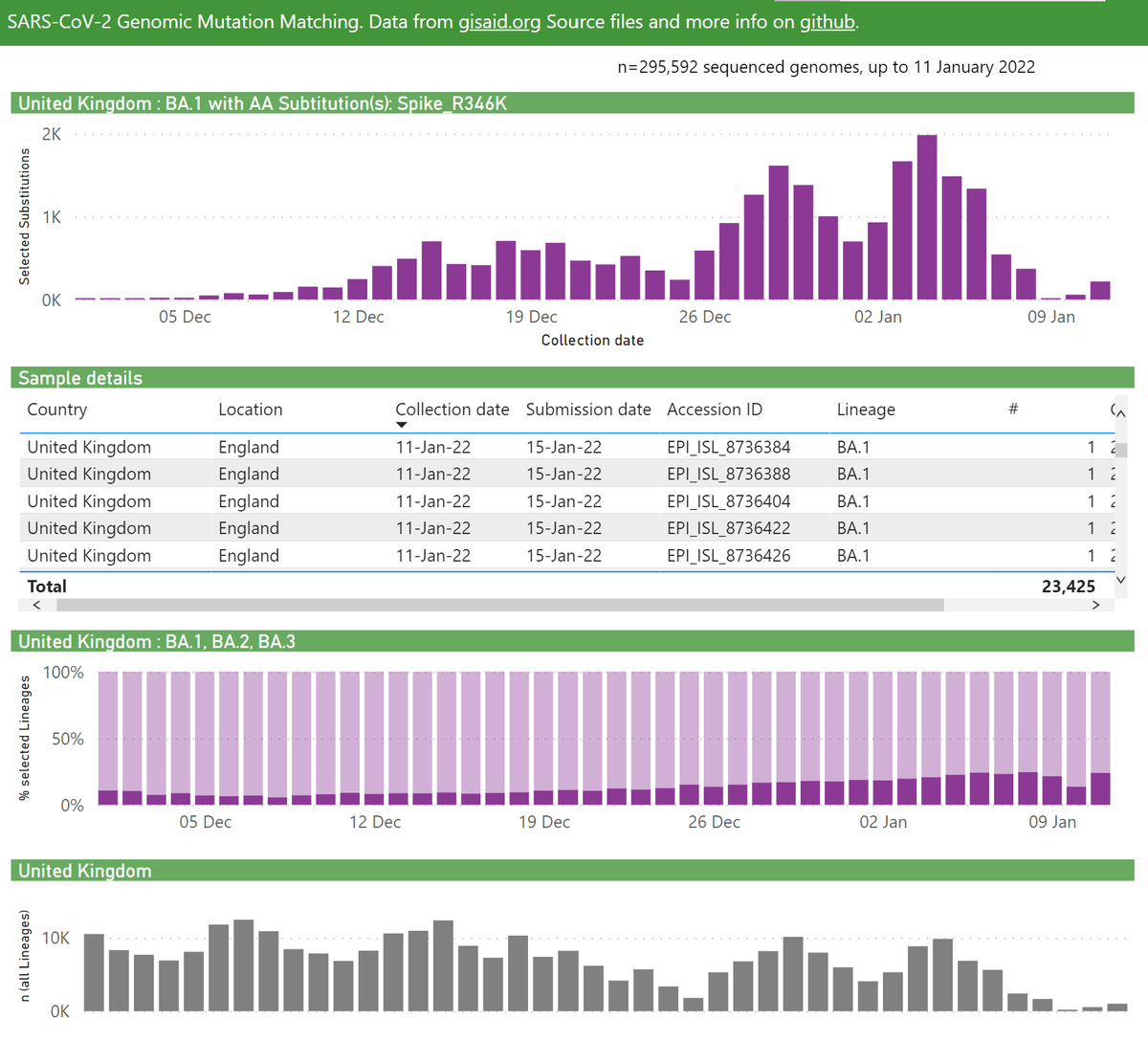
Here's the latest variant picture for BA.2 (Omicron). Globally it is far less common than it's sibling BA.1 lineage.
BA.2 has 28 unique mutations so very different.
The frequency of BA.2 is rising in several countries, notably India, Denmark & Singapore.
🧵
BA.2 has 28 unique mutations so very different.
The frequency of BA.2 is rising in several countries, notably India, Denmark & Singapore.
🧵

Note the Frequency is calculated for each country independently, comparing to all the recent samples sequenced in that country.
Here's the latest variant picture for India.
BA.2 (Omicron) appears to have recently passed BA.1 and reached 40% frequency. Recent sample sizes are very low.
BA.2 (Omicron) appears to have recently passed BA.1 and reached 40% frequency. Recent sample sizes are very low.

Here's the latest variant picture for Denmark.
BA.2 (Omicron) has been rising steadily since mid-December, reaching 28% frequency.
BA.2 (Omicron) has been rising steadily since mid-December, reaching 28% frequency.

Here's the latest variant picture for Singapore.
BA.2 (Omicron) is rising rapidly in January, reaching 18% frequency by 9 January.
BA.2 (Omicron) is rising rapidly in January, reaching 18% frequency by 9 January.

Interactive dataviz here:
github.com/Mike-Honey/cov…
github.com/Mike-Honey/cov…
Here’s an interesting discussion of BA.2 vs BA.1
https://twitter.com/shay_fleishon/status/1483152327242571786
• • •
Missing some Tweet in this thread? You can try to
force a refresh















